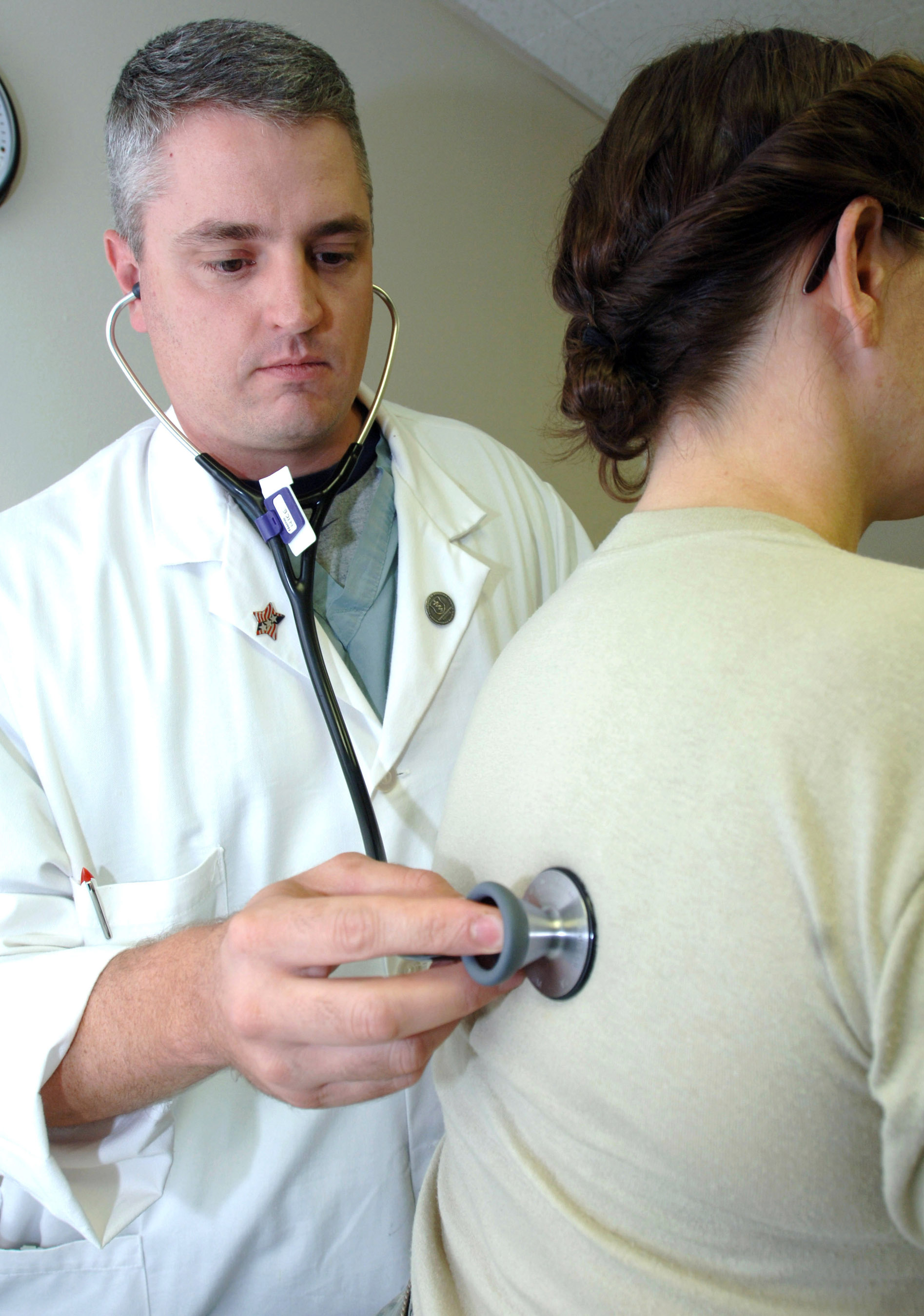The value of placing hands on a patient is universally acknowledged by health professionals. ...(It) has a great deal to do with the patient's well-being, whether he or she suffers from a common cold or a terminal disease. When the DO examines a patient (in this way)...the treatment has already begun.
--American Osteopathic Association
From MRIs to new prescription medicines, osteopathic physicians -- DOs -- use all of the available high-tech technologies in diagnosis, treatment, and prevention of disease. But the real key to what DOs do is truly "at hand" with manual medicine, also known as OMT (osteopathic manipulative treatment or therapy).
In conjunction with or in place of medication or surgery, a DO uses a hands-on, non-invasive technique -- manual medicine -- that brings an added dimension to patient care. Not every case calls for OMT, and although skilled in its application, DOs may or may not use it. Once a DO has ruled out non-mechanical (organic) causes for an illness through tests and X-rays, manual medicine may be used in conjunction with or in place of other forms of treatment (medicine or surgery). And because musculoskeletal dysfunction may mimic other disease symptoms, manual medicine often is an important diagnostic and treatment tool.
While most often associated with physical ailments such as lower back pain, manual medicine is successful in treating other chronic disorders such as asthma, menstrual pain, carpal tunnel syndrome, sinus problems, and migraines.
There are a variety of manipulation techniques a DO can use in the form of palpation (touch) as a diagnostic procedure to detect soft tissue changes or structural abnormalities or corrective thrust forces to relieve dysfunction or restriction of motion in joints. Following is what you can expect a DO to do:
STRUCTURAL EXAM
A structural exam begins with an evaluation of posture, spine, and balance. A DO uses his or her fingers to palpate the back and extremities, and checks joints, muscles, ligaments, and tendons, for restricted motion or pain. This helps a DO detect even minute changes that signal injury or impairment. A DO integrates this information with the individual's medical history, a physical examination, and a discussion of the patient's emotional factors (stresses from job change or death of a spouse, for instance), diet and exercise habits, to establish a treatment plan.
TREATMENT
When indicated, manual medicine techniques are used to treat structural problems and relieve joint restrictions and abnormalities. One or more treatments may be needed, depending on the particular disorder.
Cases in Point
1. A patient complains of a pain on her side. The DO asks questions about the pain, its onset, duration, and intensity, and reviews her medical history. The physician orders a series of tests to determine whether the pain is caused by disease (a gallbladder or appendix problem, for example). The tests are negative. The physician reviews information about her workplace environment, and learns that she has a "surround-style" desk. The DO considers that she might be suffering from postural-mechanical strain. Based upon a physical examination, the negative test results, and conversations with this patient, the physician uses manual medicine to relieve motion restriction and muscle strain caused by improper posture and movement. The physician also recommends changes in the office environment to prevent further problems.
2. A patient complains of cough, congestion, fever, and headache. The DO suspects he is suffering from chronic sinusitis, and conducts an exam and orders the appropriate tests. The diagnosis is confirmed. The physician prescribes an antibiotic to treat the infection and uses a variety of OMT techniques to promote sinus drainage and relieve pain. The patient's congestion decreases dramatically after only one OMT session. When the antibiotic treatment ends, the infection is gone.
Source: American Osteopathic Association.

